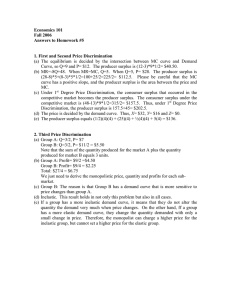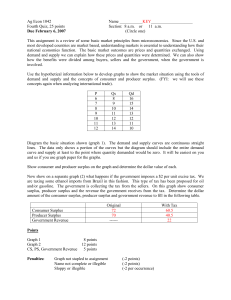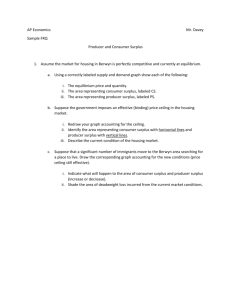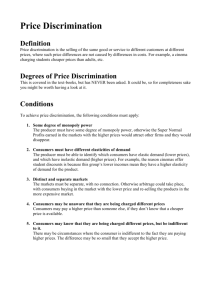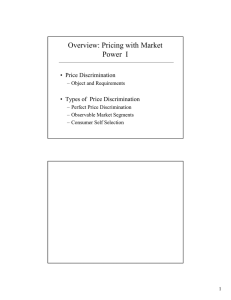File
advertisement
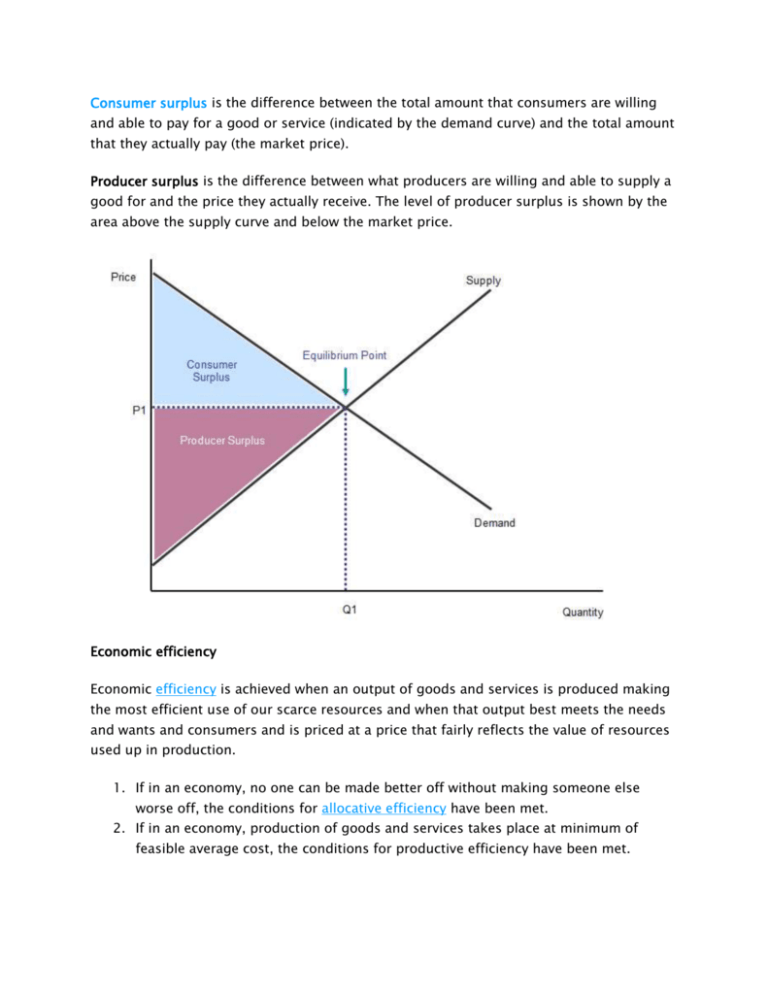
Consumer surplus is the difference between the total amount that consumers are willing and able to pay for a good or service (indicated by the demand curve) and the total amount that they actually pay (the market price). Producer surplus is the difference between what producers are willing and able to supply a good for and the price they actually receive. The level of producer surplus is shown by the area above the supply curve and below the market price. Economic efficiency Economic efficiency is achieved when an output of goods and services is produced making the most efficient use of our scarce resources and when that output best meets the needs and wants and consumers and is priced at a price that fairly reflects the value of resources used up in production. 1. If in an economy, no one can be made better off without making someone else worse off, the conditions for allocative efficiency have been met. 2. If in an economy, production of goods and services takes place at minimum of feasible average cost, the conditions for productive efficiency have been met. Price discrimination and consumer & producer surplus Price discrimination occurs when a firm charges a different price to different groups of consumers for an identical good or service, for reasons not associated with the costs of supply. Is price discrimination something that economists should be supporting in terms of the behaviour of businesses and final outcomes in different markets? Pure (1st degree) discrimination With 1st degree price discrimination the firm is able to perfectly segment the market so that the consumer surplus is removed and turned into producer surplus. Thus there is a clear transfer of welfare from consumers to producers. This is shown in the next diagram. Third degree (or multi-market) price discrimination involves charging different prices for the same product in different segments of the market. The key is that third degree discrimination is linked directly to consumers’ willingness and ability to pay for a good or service. It means that the prices charged may bear little or no relation to the cost of production. Clearly the price elasticity of demand is the key factor determining the pricing decision for producers for each part of the market. The market is usually separated in two ways: by time or by geography. For example, exporters may charge a higher price in overseas markets if demand is found to be more inelastic than it is in home markets. There is more consumer surplus to be exploited when demand is insensitive to price changes.

